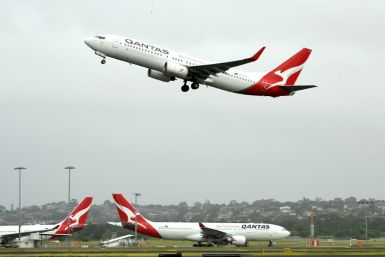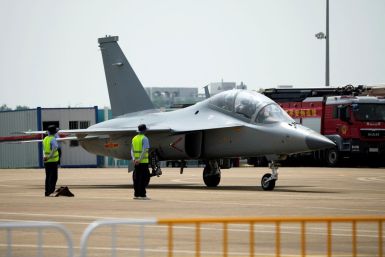Qantas Cuts 500 Engineering Jobs After 83% Drop in Profit
The labor dispute that has plagued Qantas for months has taken its toll on the air carrier's bottomline. The flag carrier reported on Thursday an 83 per cent decline on its half year net profit which plummeted to $42 million compared to a year ago.
With this development, Qantas may likely go into another cycle of labor disputes as Chief Executive Alan Joyce announced 500 catering and engineering jobs will be axed. The drop in profit is mainly because of a decline in passengers caused by frequent strikes and the two-day grounding of its fleet.
Qantas strikes were initiated by labor unions representing aircraft engineers and ground crew, which includes catering staff. The company just reached an agreement with the aircraft engineers' union that assures Qantas of three years of no job walk offs from the union, but is still negotiating with the ground crew union.
However, Mr Joyce ruled out offshoring of jobs which is one of the thorny issues that the unions vehemently opposed. Qantas is considering a range of options including voluntary redundancy or redeployment, the use of annual and long service leave when appropriate, or leave without pay while workers could gain experience in other areas of the aviation industry or other airlines, Mr Joyce said.
Qantas registered a first half net profit of $42 million to December 2011. For the same period a year ago, Qantas logged $239 million first half profit. However, the embattled air carrier suffered a lesser 52 per cent decline in its underlying profit at $202 million.
Besides cutting jobs, which may exceed 500, Qantas would also reduce capital expenditure by $200 million in the 2011/12 financial year and another $500 million the next financial year. The firm also plans to consolidate its catering business to just four hubs in Sydney, Melbourne, Brisbane and Perth. That means Qantas will not renew the lease on its Adelaide facility when it expires in March 2013 and sell catering facilities in Cairns and a second one in Sydney.
Likewise to be consolidated are Qantas's workforce planning team and heavy maintenance facilities which would be consolidated into just three. The job reductions would be the result of aircraft retirements and operations changes which would not justify having three heavy maintenance facilities in Melbourne, Brisbane and Avalon, Mr Joyce stressed.
The air carrier will also close more routes and cut some such as the Singapore-Mumbai and Auckland-Los Angeles trips, change aircraft type assigned to remaining routes and retire two more Boeing 747s early. It would also defer payment of Boeing 787-800s ordered due to manufacturer delays.
Qantas did not issue any explicit guidance due to "the high volatility and uncertainty in global economic conditions, fuel prices and exchange rates as well as the transformational change agenda underway."
The CAPA Centre for Aviation, which analysed Qantas's planned lower-cost premium air carrier with a hub in Asia to fully participate in the benefits of an Asian aviation hub, suggested more suitable schedules in which travelers could arrive earlier in the day in Singapore to allow same-day connections.
"Up until now our flying has been predicated on the best connecting times to Europe. So instead of convenient day time services, we have times late night arrivals into Singapore. This means that business customers can't make same day connections into the many Asian cities which are developing fast," the centre quoted a statement from Mr Joyce in October 2011.
Business Spectator's Stephen Bartholomeusz, in a commentary on Qantas's first half result, pointed out that were it not for 2011's costly battle with the three unions, the results "would have been regarded as impressive in the context in which airlines are now operating."
He said that given the $194 million cost of the industrial dispute and the $444 million higher aviation fuel cost, Qantas's results "was more than creditable" given a 6 per cent in revenue, improvement in yields and unit costs and a 5 per cent improvement in cash flow.
However, despite those improvements, he said Qantas still needs to cut the level of haemorrhaging within its international operations and to become more competitive against newer airlines that fly newer and more efficient fleets with cost bases 30 per cent or more lower than Qantas's.
Mr Bartholomeusz pointed out that these conditions, which have been the air carrier's normal operating environment for quite some time, plus the changes announced on Thursday by Mr Joyce, reflect a constant throughout most of Qantas's post-privatisation history as the air carrier struggles - relatively successfully - to survive in a dysfunctional aviation industry.






